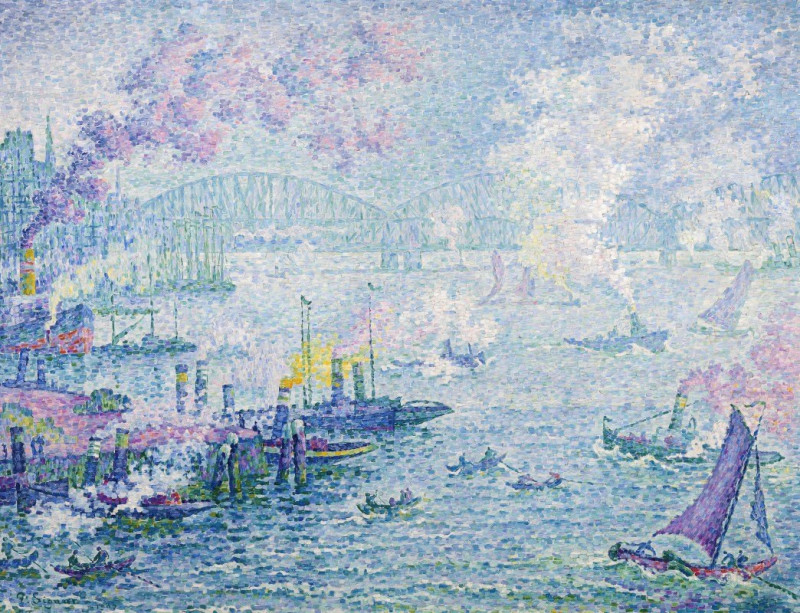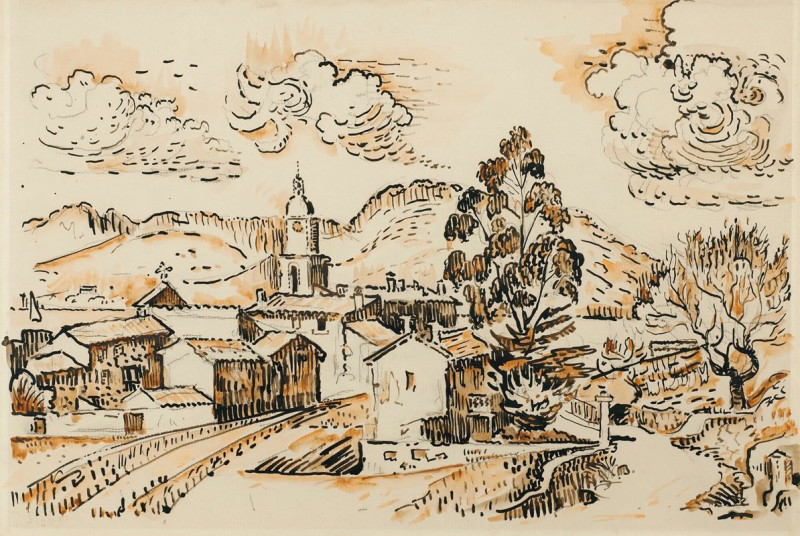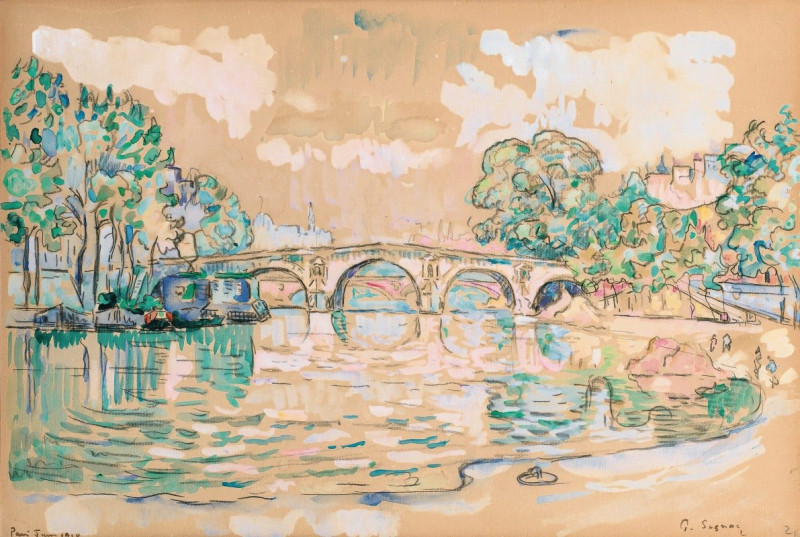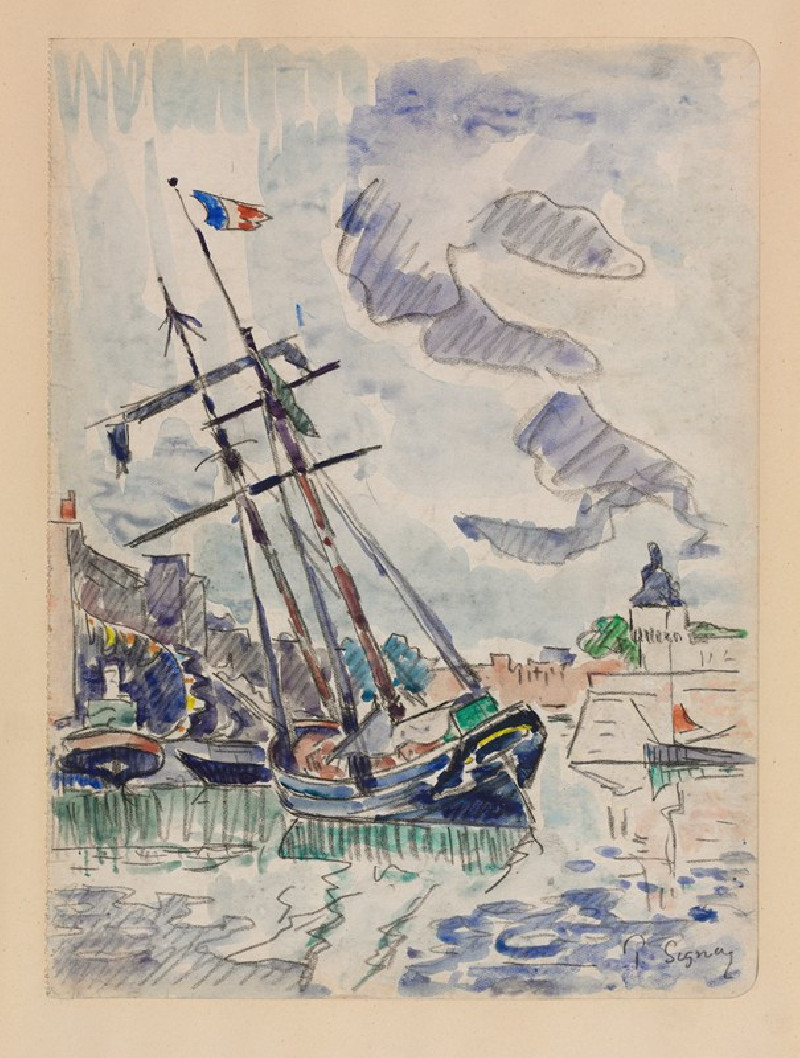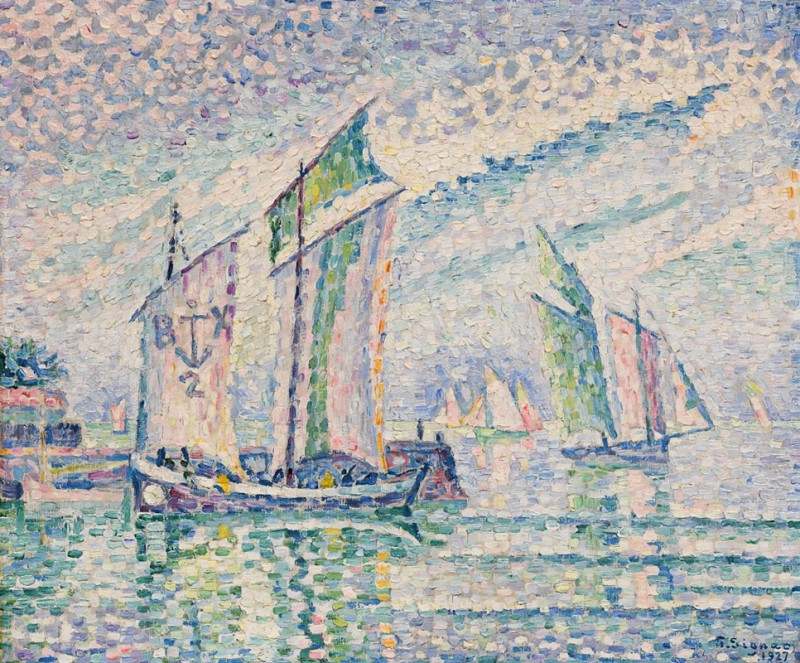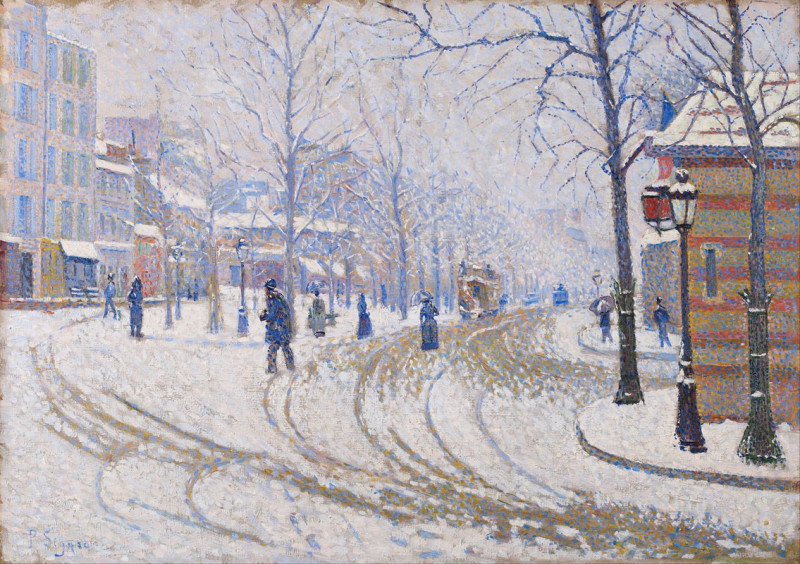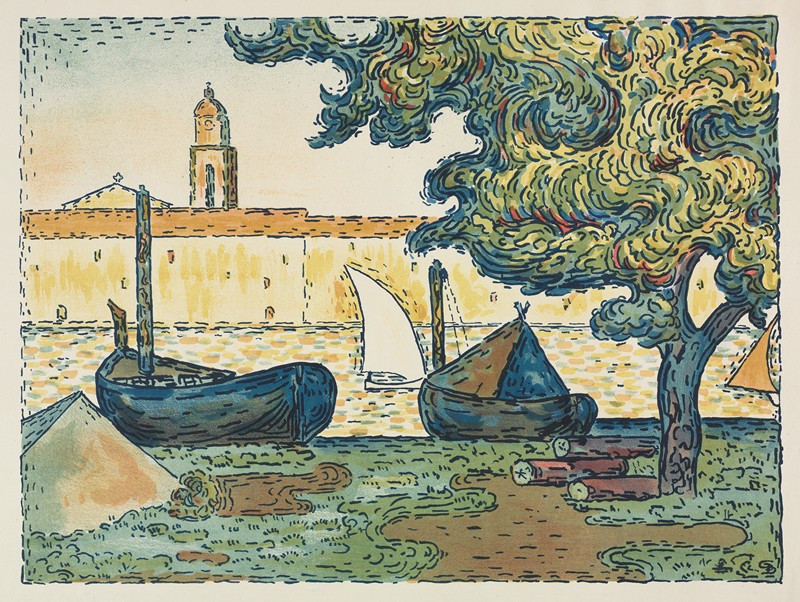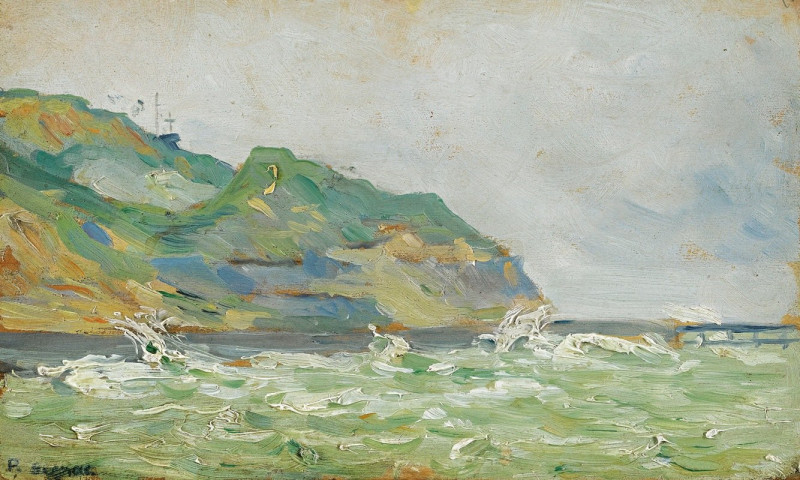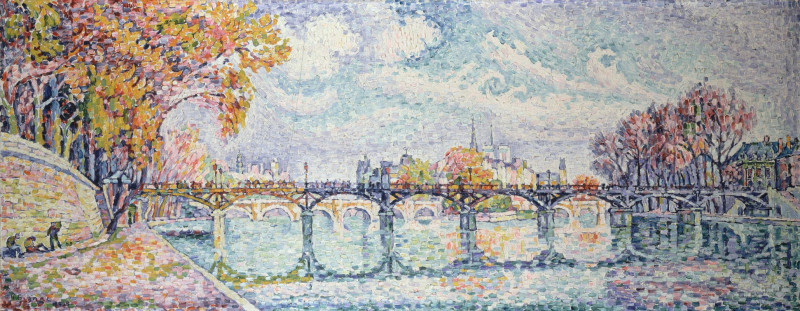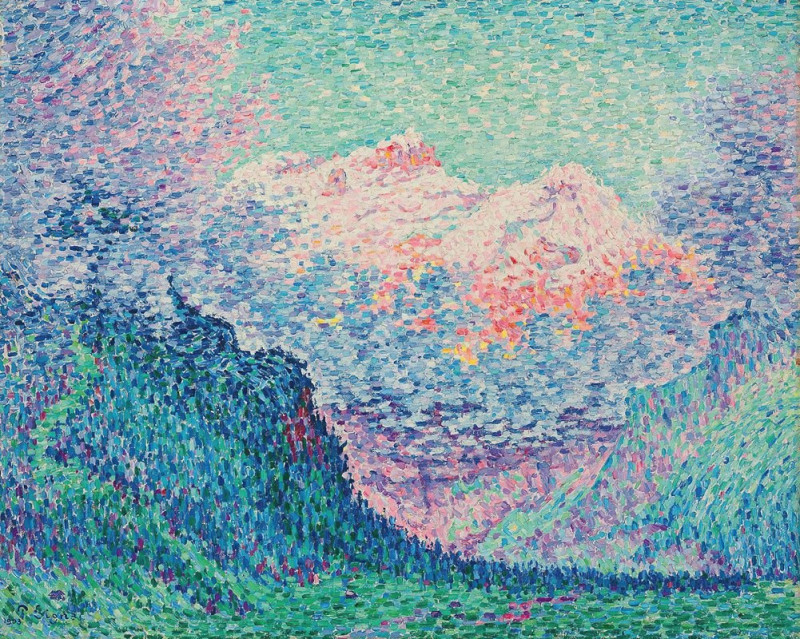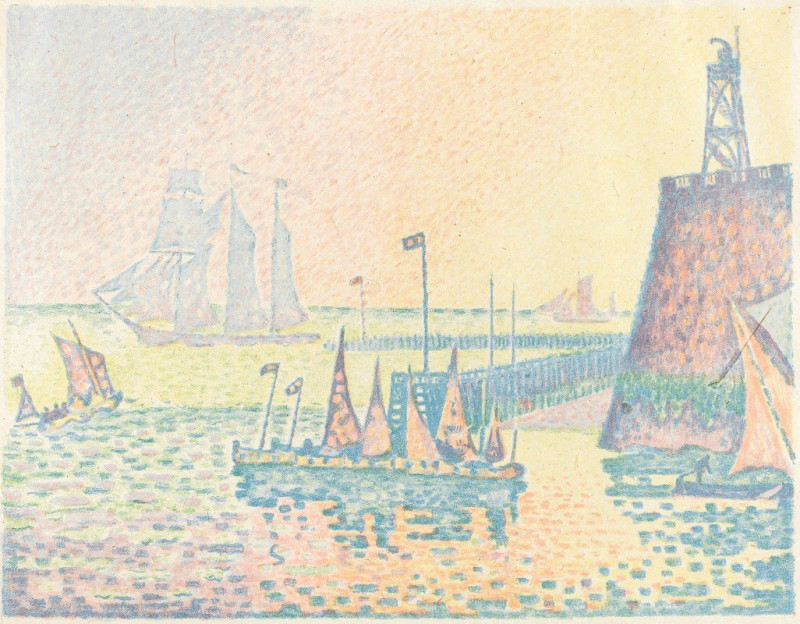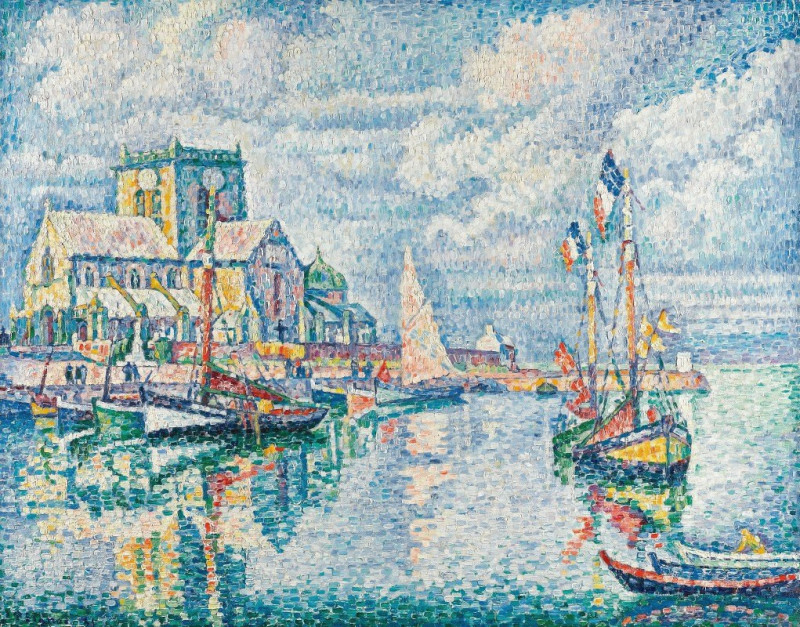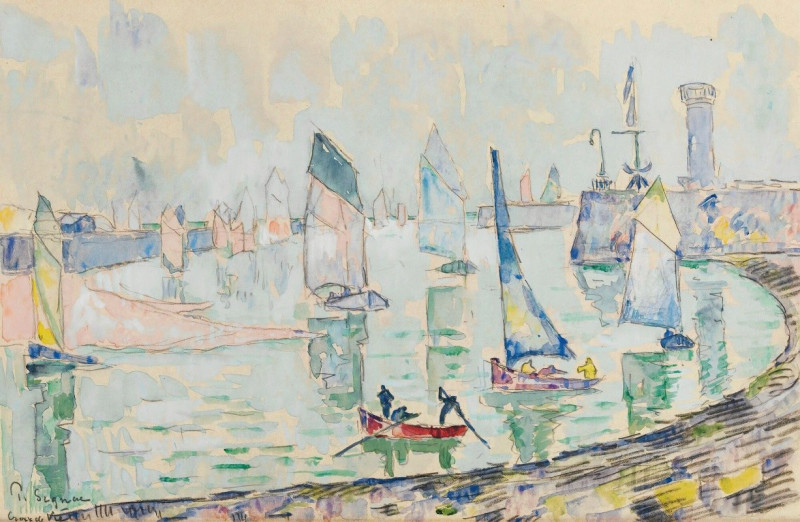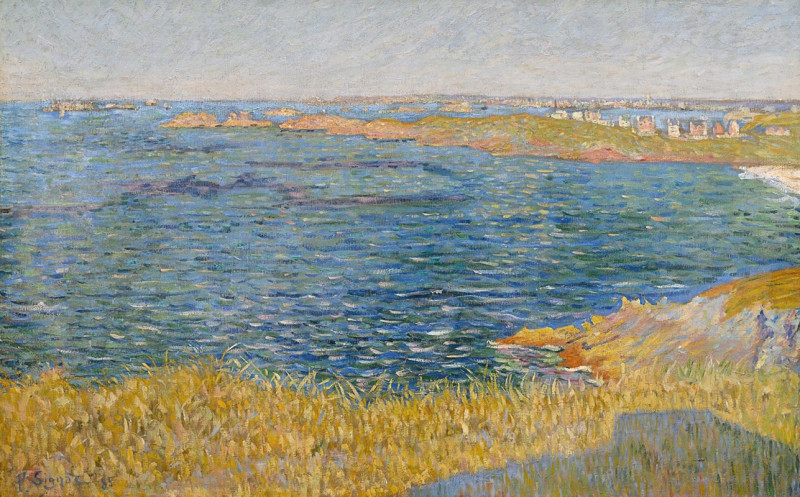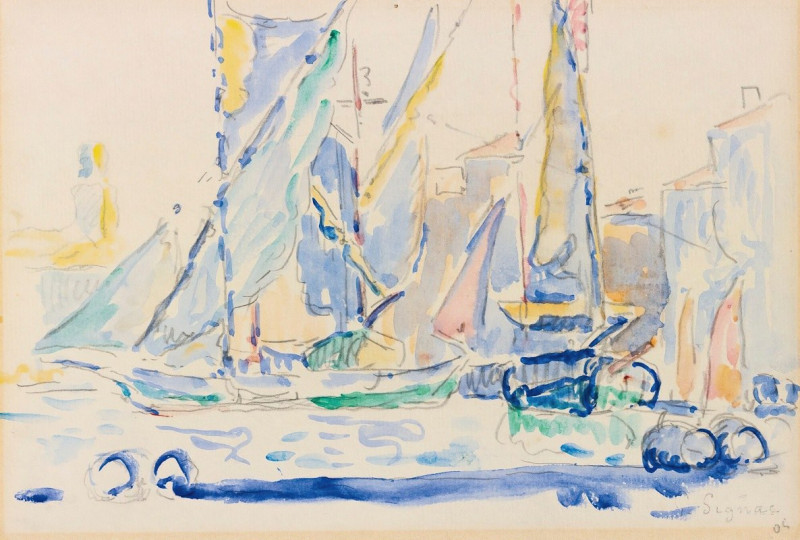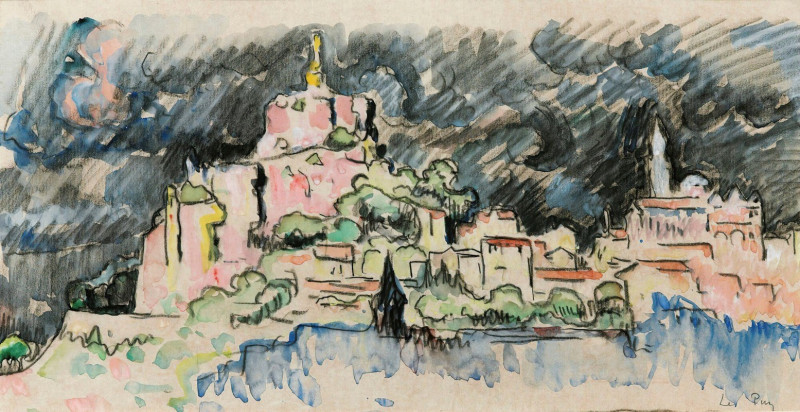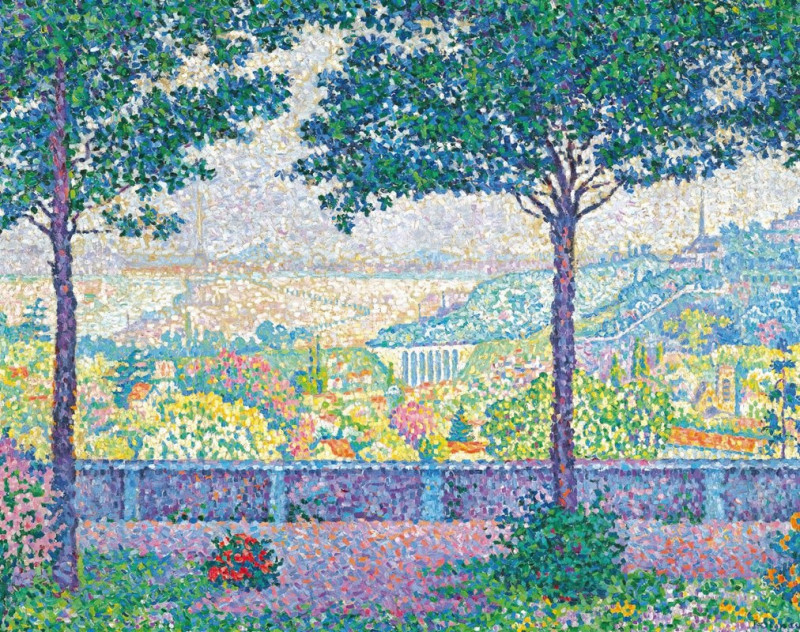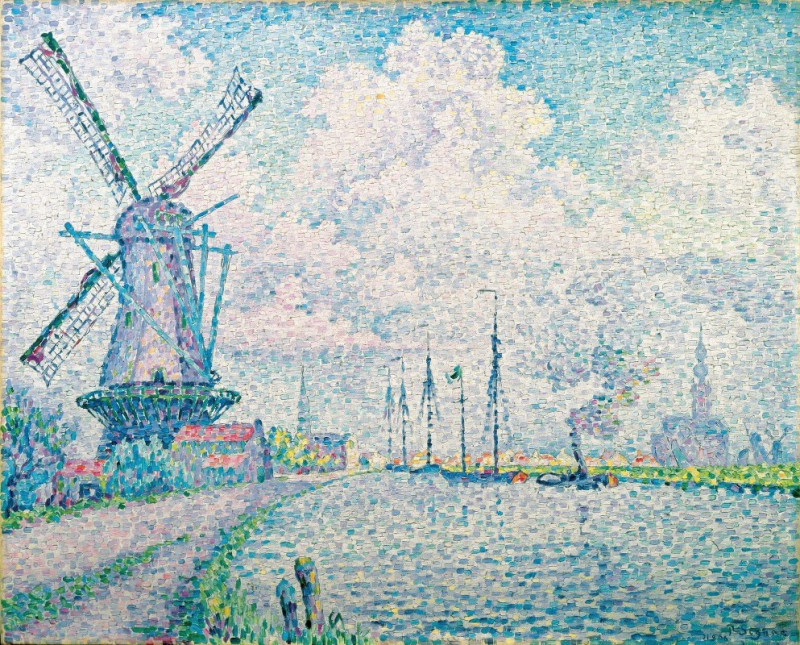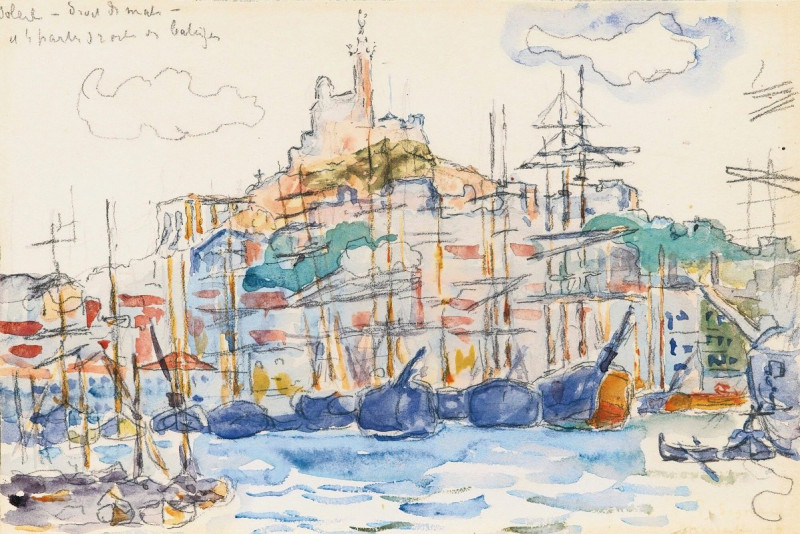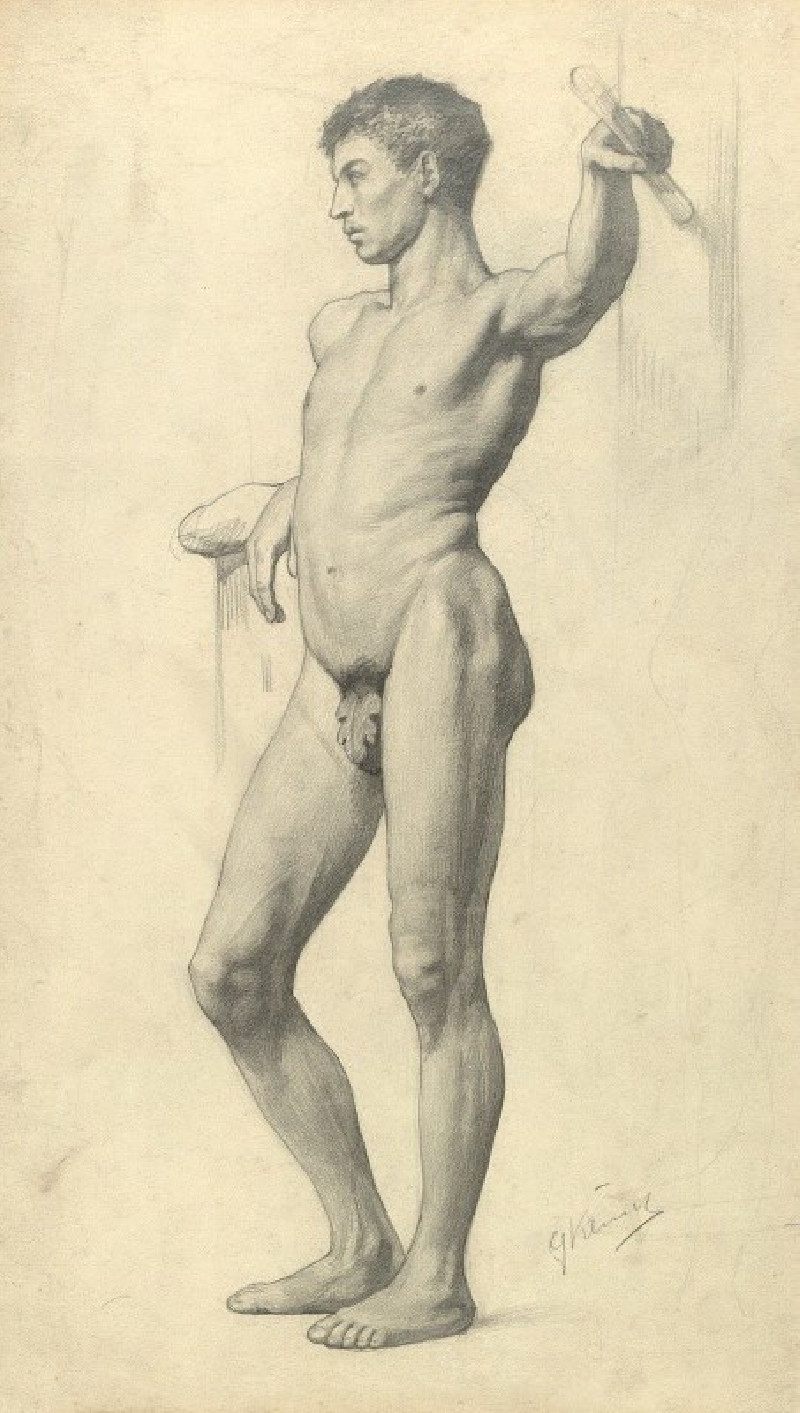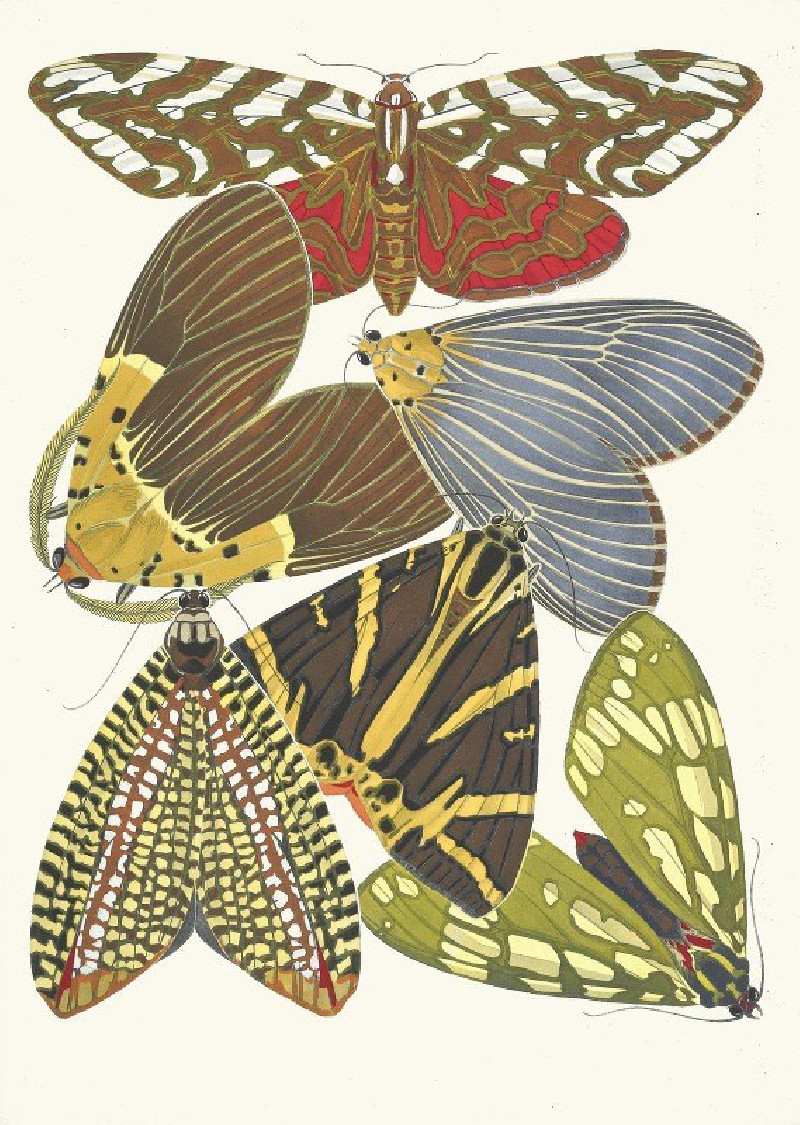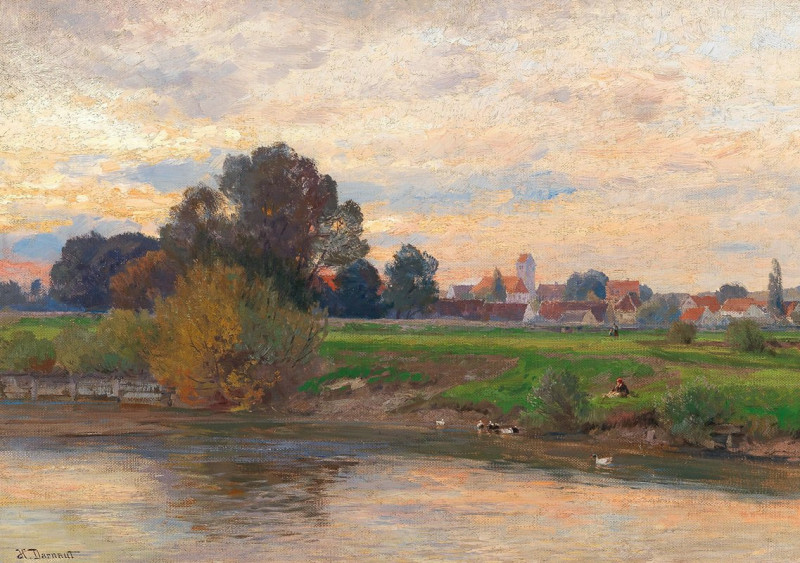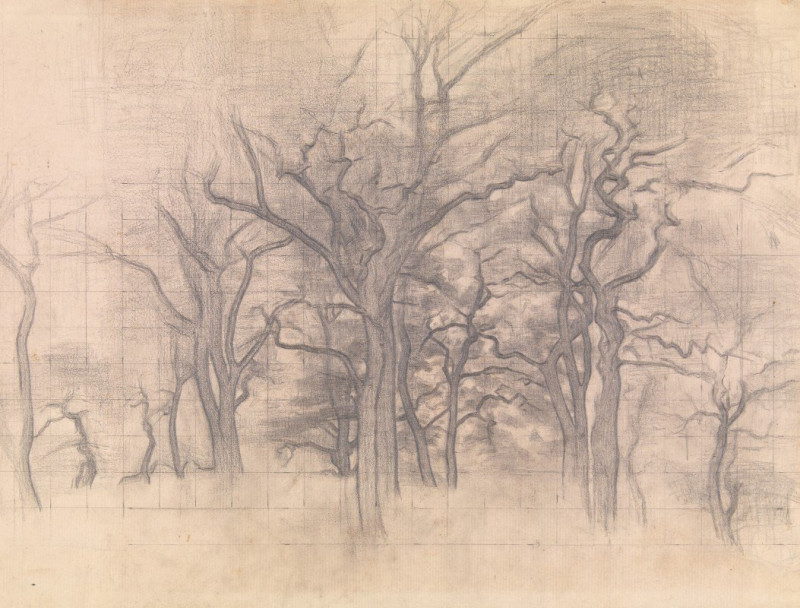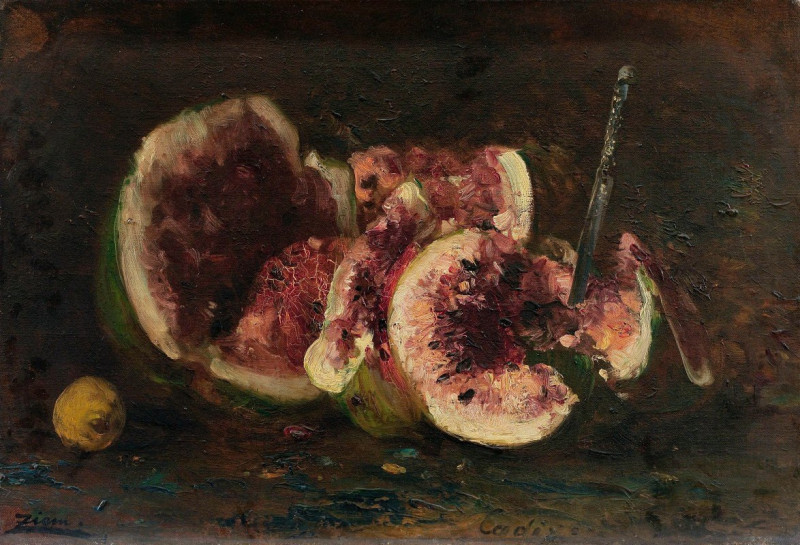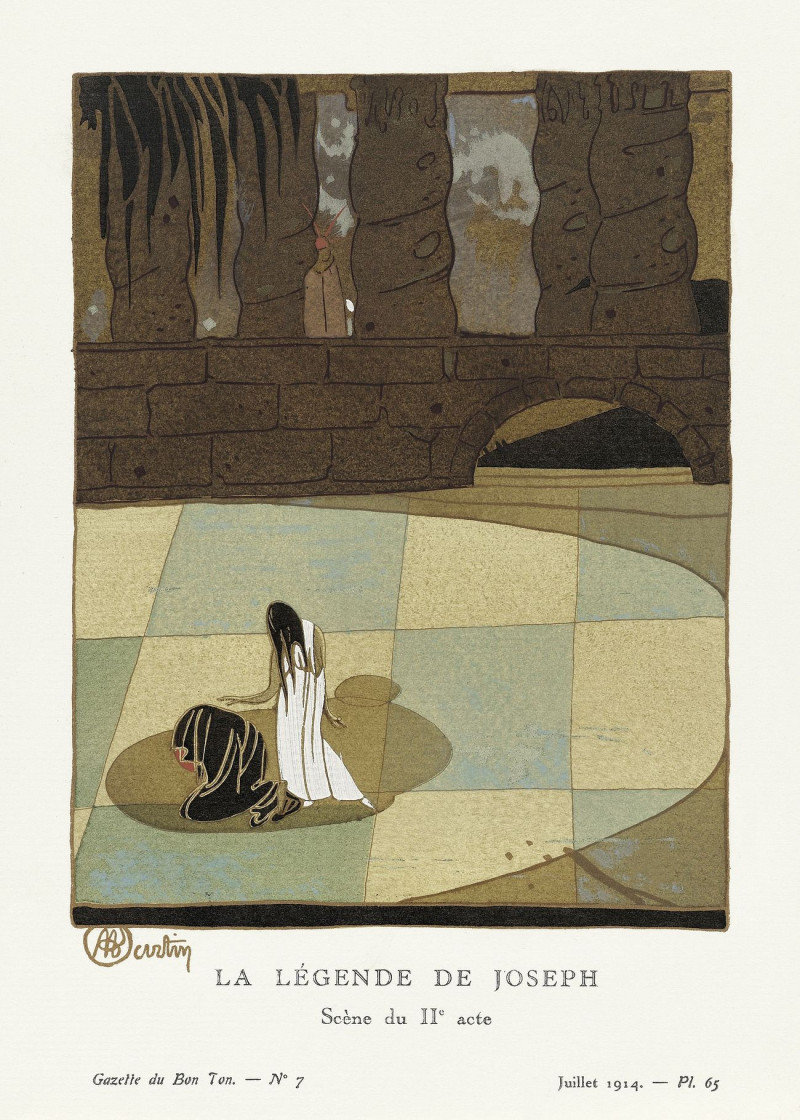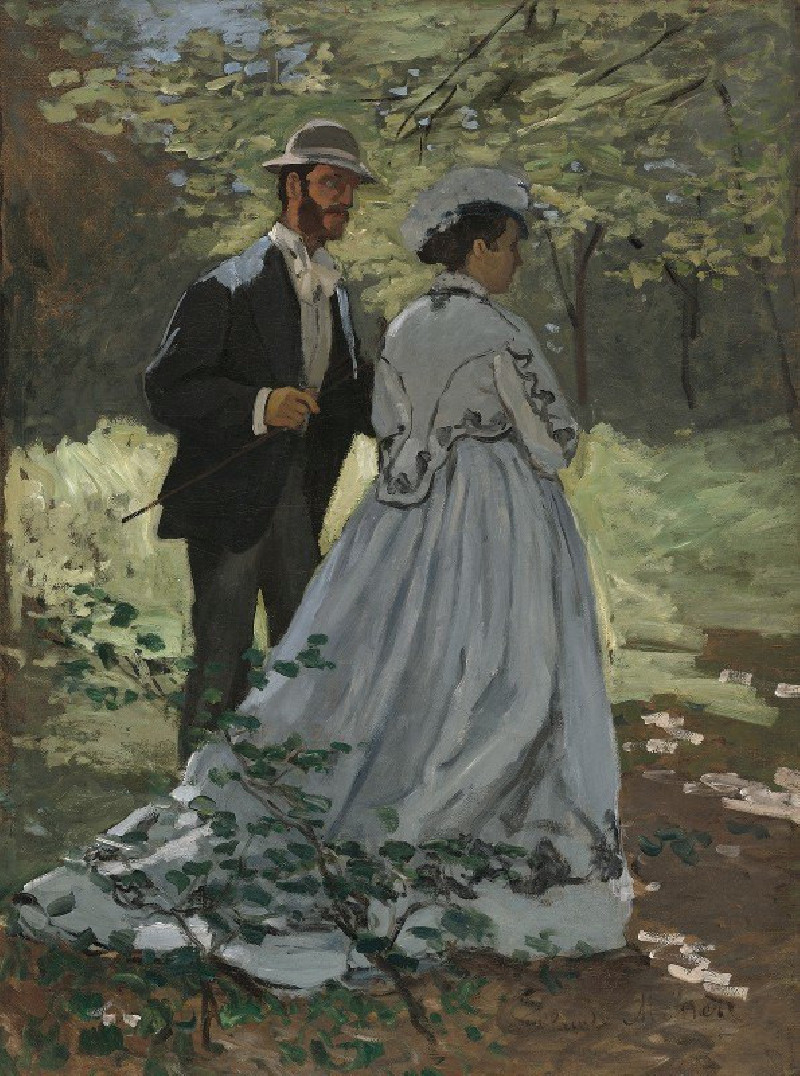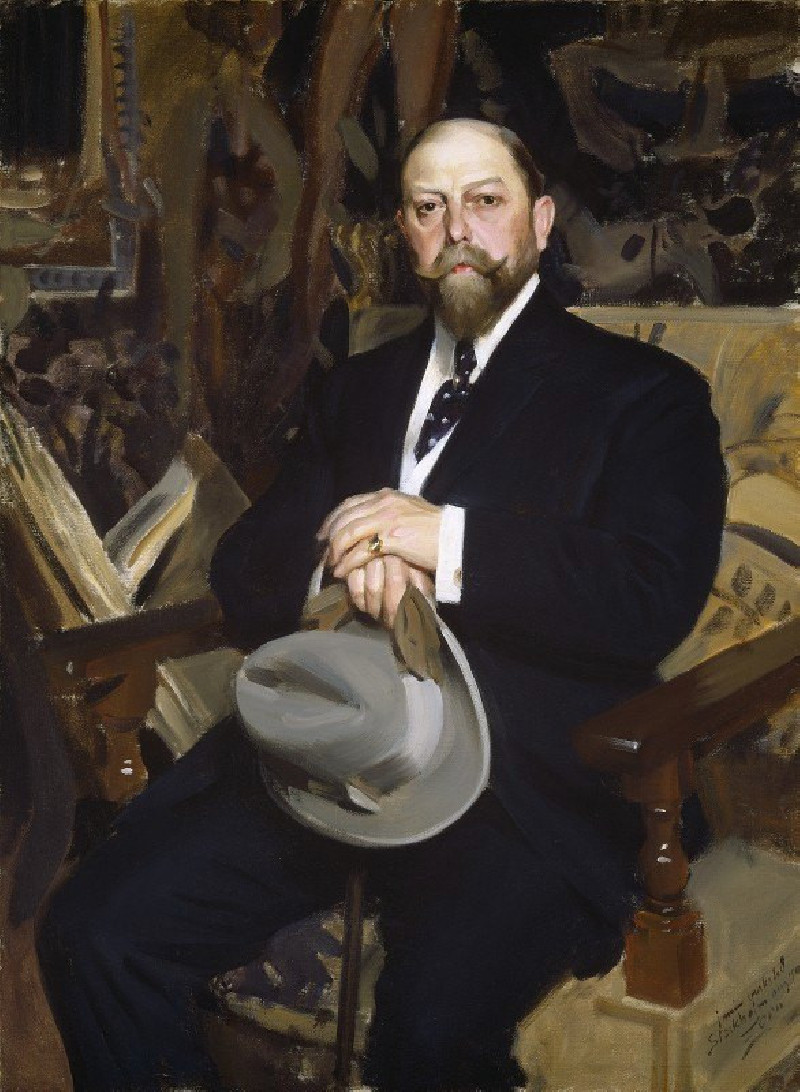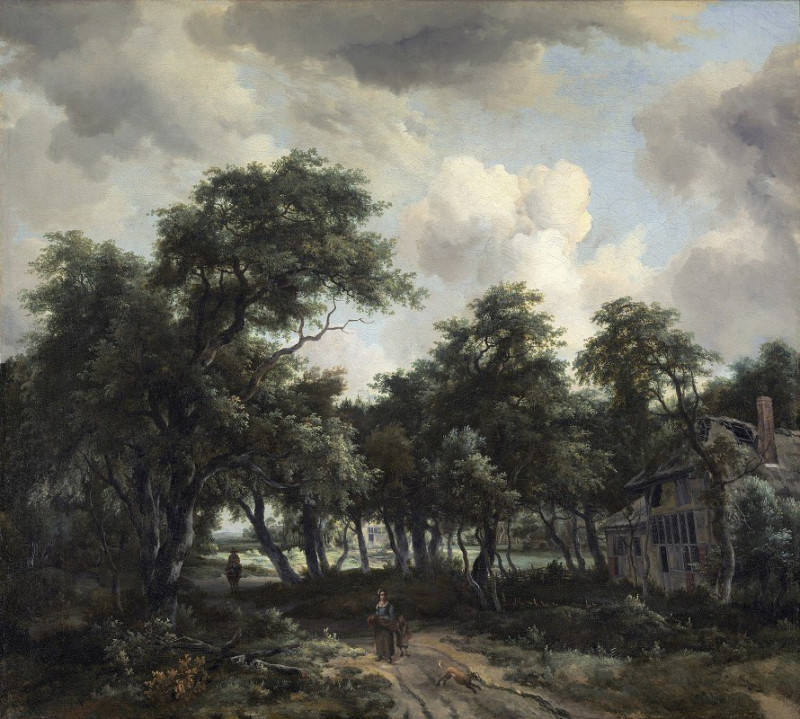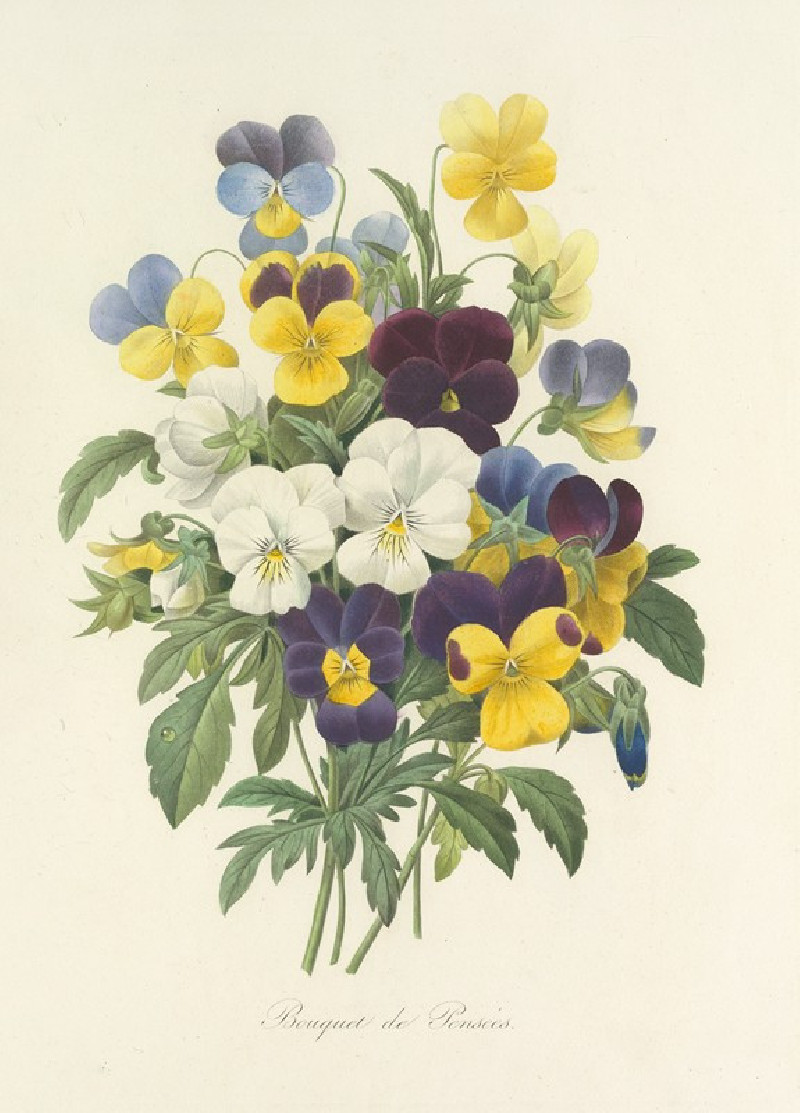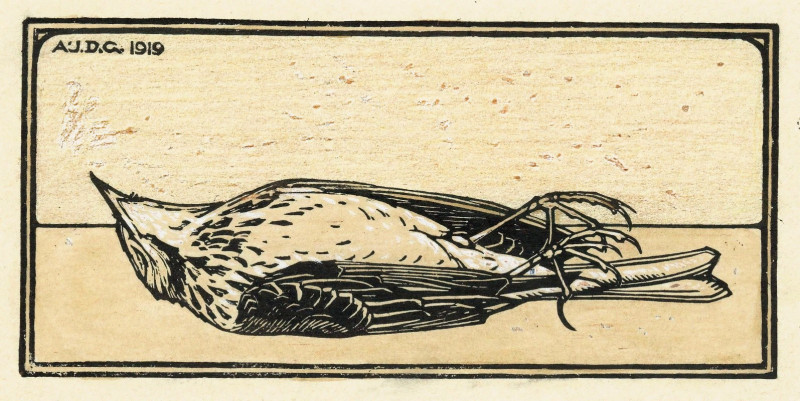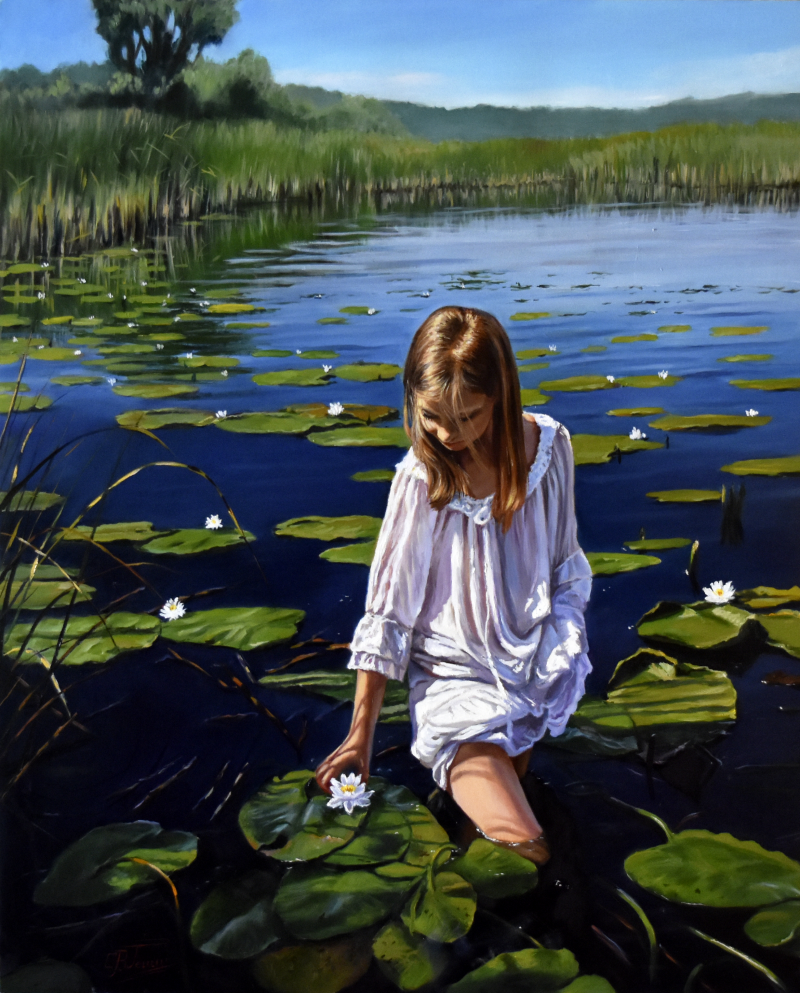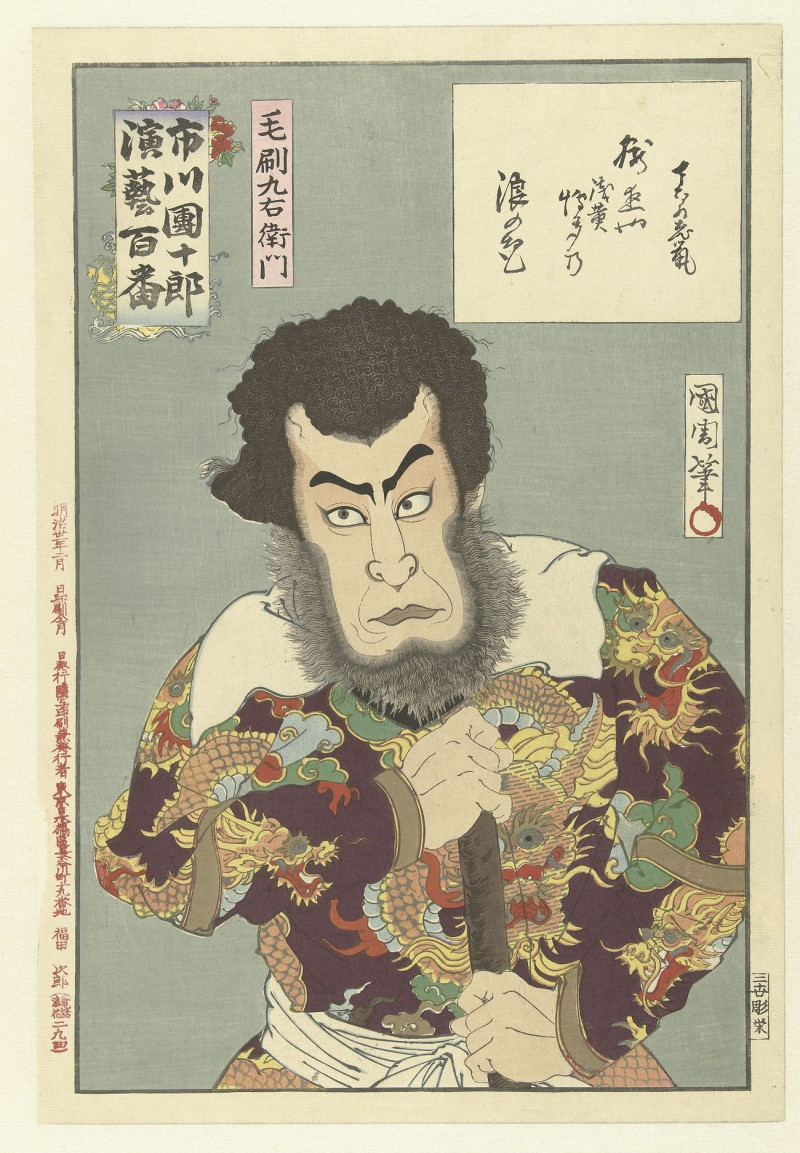The Port of Rotterdam (1907)
Technique: Giclée quality print
Recommended by our customers
More about this artwork
The Port of Rotterdam, a remarkable 1907 painting by Paul Signac, captures the bustling activity and vibrant atmosphere of one of Europe's busiest ports through the dazzling approach of pointillism. In this artwork, Signac employs small, distinct dots of color which, when viewed together, create a luminous and dynamic scene, brimming with life and movement.The canvas is awash with a palette of cool hues—blues, greens, and purples—that dominate the depiction of the water, sky, and distant architecture. The scene is enlivened with touches of warm yellows and reds, highlighting the industrial energy and the flurry of activity in the port. Small boats and sailing vessels dot the river, suggesting the constant coming and going of maritime traffic. Prominent in the background is the silhouette of a bridge, possibly representing the iconic Willemsbrug, which stretches across the Maas River.Toward the foreground, groups of figures are seen on the docks, possibly workers or passengers, contributing to the narrative of a thriving commercial hub. Each dot is strategically placed, creating an image that is as much about the rhythm and flow of life as it is a static scene.This painting not only demonstrates Signac's mastery of color and form but also reflects the technological and economic vibrancy of the early 20th century. The Port of Rotterdam is an emblematic work that offers a window into the past, while showcasing the timeless beauty and complexity of maritime life.
Delivery
Returns
Paul Signac (1863-1935) was a French Neo-Impressionist painter. Together with Georges Seurat, Signac developed the Pointillism style. He was a passionate sailor, bringing back watercolor sketches of ports and nature from his travels, then turning them into large studio canvases with mosaic-like squares of color. He abandoned the short brushstrokes and intuitive dabs of color of the impressionists for a more exact scientific approach to applying dots with the intention to combine and blend not on the canvas, but in the viewer's eye.

